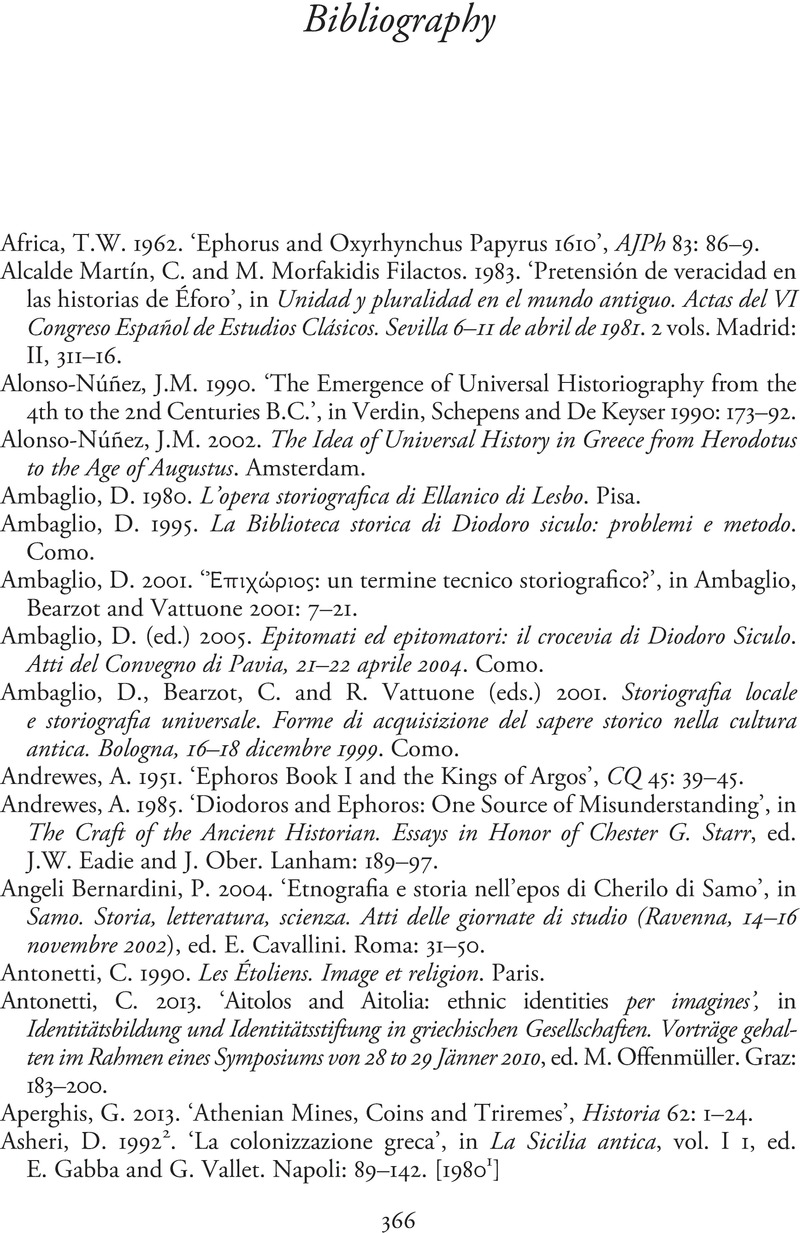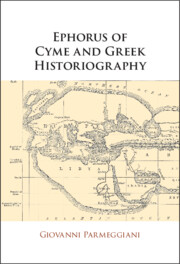Book contents
- Ephorus of Cyme and Greek Historiography
- Ephorus of Cyme and Greek Historiography
- Copyright page
- Contents
- Acknowledgements
- Abbreviations and a Note
- Introduction
- Chapter 1 Questions and Answers
- Chapter 2 Ephorus’ Histories: The Method
- Chapter 3 Ephorus’ Histories: The Contents
- Chapter 4 Ephorus the Universal Historian
- Conclusions
- Appendix Ephorus and the Hellenika Oxyrhynchia
- Bibliography
- Index Locorum
- Subject Index
- Index of Greek Words and Expressions
- References
Bibliography
Published online by Cambridge University Press: 30 November 2023
- Ephorus of Cyme and Greek Historiography
- Ephorus of Cyme and Greek Historiography
- Copyright page
- Contents
- Acknowledgements
- Abbreviations and a Note
- Introduction
- Chapter 1 Questions and Answers
- Chapter 2 Ephorus’ Histories: The Method
- Chapter 3 Ephorus’ Histories: The Contents
- Chapter 4 Ephorus the Universal Historian
- Conclusions
- Appendix Ephorus and the Hellenika Oxyrhynchia
- Bibliography
- Index Locorum
- Subject Index
- Index of Greek Words and Expressions
- References
Summary

- Type
- Chapter
- Information
- Ephorus of Cyme and Greek Historiography , pp. 366 - 394Publisher: Cambridge University PressPrint publication year: 2023

